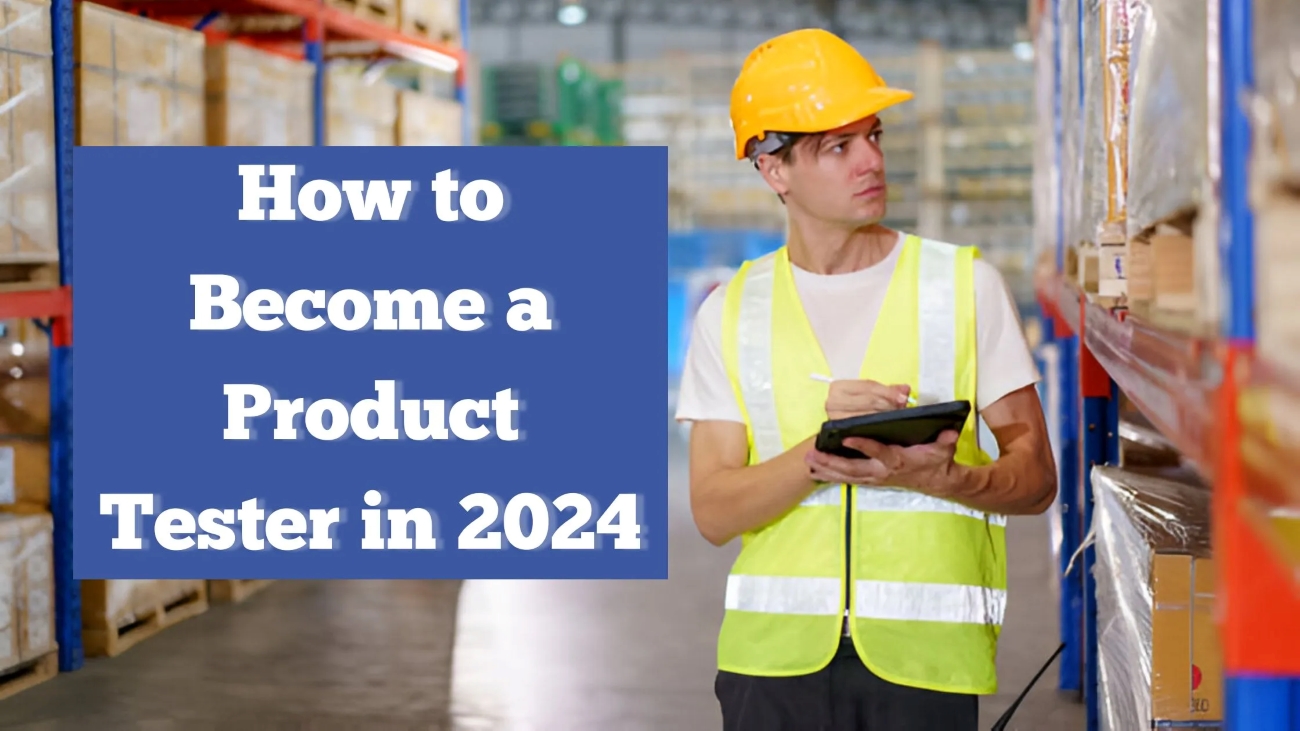Becoming a product tester offers a unique opportunity to engage with new products, share insights, and influence product development. Whether you’re interested in electronics, beauty products, or food, this guide will help you navigate the steps on How to Become a Product Tester and to excel in this exciting role.
What is Product Testing?
Product testing involves evaluating products before they hit the market. Companies rely on testers to provide feedback on usability, quality, and overall experience, helping refine products for a better customer experience. Testers often receive compensation, which can include free products, cash payments, or gift cards.
Step 1: Identify Your Interests
To become an effective product tester, focus on categories that resonate with your passions. Testing items you genuinely enjoy not only enhances your experience but also ensures authentic feedback. Here’s how to narrow down your interests:
- Evaluate Your Preferences: Reflect on your hobbies and frequently used products. Are you passionate about gadgets, skincare, or gourmet snacks?
- Consider Past Experiences: Think about products you’ve previously enjoyed and would like to explore further.
- Stay Updated: Research current trends in your favorite niches to ensure you align with innovative products.
Pro Tip: Concentrating on one niche can position you as a specialist, increasing your desirability among companies in that domain.
Step 2: Research Reputable Product Testing Companies
A successful product tester needs to connect with credible organizations. Many companies specialize in recruiting testers, offering diverse opportunities to engage with different products.
Popular Product Testing Platforms
- UserTesting: Ideal for digital products and app usability feedback.
- BzzAgent: Focuses on beauty, home goods, and food.
- Home Tester Club: Provides opportunities to test household items.
- Clicks Research: Offers varied product testing roles across multiple industries.
- BetaTesting: Specializes in early-stage tech product evaluations.
Search Tips:
- Use keywords like “free product testing” or “best product testing companies.”
- Join social media groups dedicated to product testers for insider tips and updates.
Step 3: Join Product Testing Programs
Joining a consumer panel or product testing program is essential. These programs pair testers with companies that match their interests and demographics.
How to Get Started:
- Sign Up: Create profiles on multiple product testing websites to maximize your chances.
- Complete Your Profile: Ensure it includes detailed information such as age, gender, location, and interests.
- Engage with Surveys: Participating in surveys helps companies match you with suitable products.
Step 4: Create a Strong Tester Profile
Your profile acts as your resume in the product testing world. A well-optimized profile increases your chances of being selected.
Profile Optimization Tips:
- Be Honest: Provide accurate details about your lifestyle, preferences, and demographics.
- Highlight Skills: Mention any expertise or hobbies that align with the products you aim to test.
- Keep it Updated: Regularly revise your profile to reflect new interests or skills.
Step 5: Understand the Product Testing Process
Once selected, you will undergo a structured process to evaluate products.
The Three Stages of Product Testing:
- Receiving the Product: Inspect the package and review any included instructions or guidelines.
- Testing the Product: Use the product as intended, noting its performance, strengths, and any issues encountered.
- Providing Feedback: Submit detailed evaluations via forms or interviews, focusing on usability, design, and overall satisfaction.
Step 6: Compensation Models in Product Testing
Different companies offer various compensation models, which may include:
- Free Products: Ideal for those who enjoy trying new items without monetary costs.
- Cash Payments: Provides financial benefits for participating in testing programs.
- Gift Cards: Allows flexibility to purchase items of your choice.
Pro Tip: Choose compensation types that best align with your personal goals and preferences.
Recommended Tools for Tracking Opportunities
Use tools and techniques to manage your product testing activities efficiently:
- Spreadsheets: Track applications, testing schedules, and feedback submissions.
- Social Media Alerts: Follow product testing pages for updates on new opportunities.
- Community Forums: Engage with other testers to learn best practices and discover hidden opportunities.
Conclusion
How to Become a Successful Product Tester is a rewarding endeavor that combines personal interests with meaningful contributions to product development. By identifying your niche, connecting with reputable companies, and maintaining a strong tester profile, you can unlock opportunities to test exciting new products while enjoying various forms of compensation.


